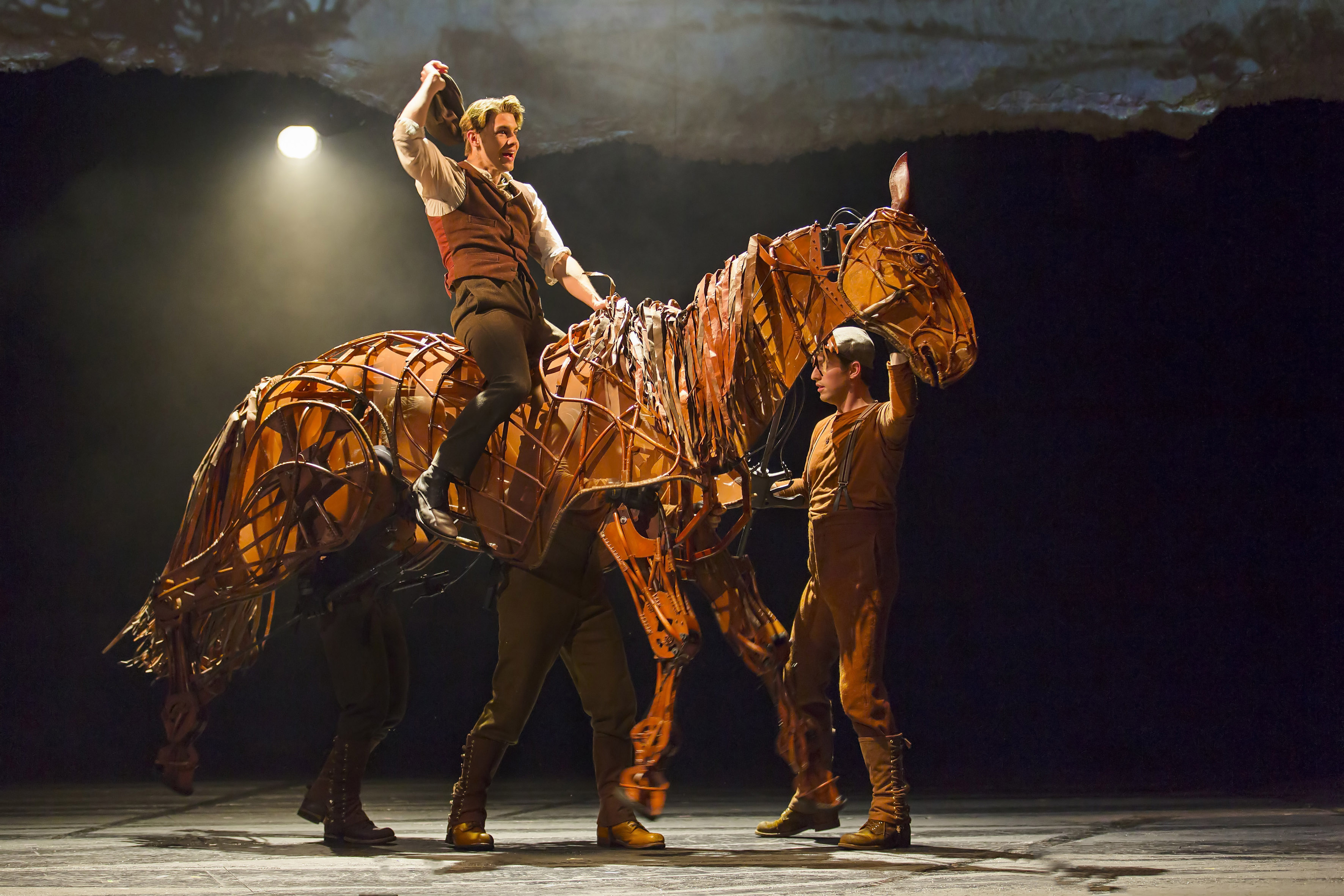A story of love and betrayal wholly different from those usually explored in the world of entertainment, the National Theater production of “War Horse” presents the story of Albert and his horse Joey with sentiment not drenched in overemotional excess.
The telling of the epic, based on the novel by Michael Morpurgo and adapted by Nick Stafford, begins on a somewhat bare stage. Albert Narracott embarks on his journey in raising and forming an unbreakable bond with the horse he was never meant to own, only to have the horse sold into the first World War by his father. Albert, who refuses to let his relationship with Joey fall to ruin, joins the war in search of his horse.
Under the direction of Bijan Sheibani, Andrew Veenstra, who plays Albert Narracott, gives a heartwarming and thoroughly believable performance as a young man invested in the life of the horse he has so lovingly raised against the odds. With the life and passion of youth, Veenstra’s performance is transportive.
Jason Loughlin, Brian Keane and Alex Morf, who play Lieutenant James Nicholls, Sergeant Thunder and Private David Taylor, respectively, portray the misgivings and challenges of war well while also delivering the comic relief needed in a story heavy with emotional distress.
The onstage narration of John Milosich and musical accompaniment of Nathan Koci guide the movement from scene to scene and aid in pacing the story. Though the pace starts out well, it slows as the play progresses, causing perhaps the most pivotal scenes to test the audience’s focus.
The most striking performance is given by the horses themselves. Essentially life-size wooden puppets, the horses are skillfully operated by members of the Handspring Puppet Company (in this performance, Christopher Mai, Derek Stratton, Rob Laqui). They are given almost human tendencies, their movements strong and confident, and their sounds, while not typically expected from the mouth of a horse, are expressive of the horses’ emotions.
It is this indirect portrayal of the horses, for example with a human wail as opposed to a horse-like neigh, that allows the audience to truly understand the thoughts and feelings of Joey and better grasp the idea that the relationship between Albert and Joey is more than that of a man and a horse: It is a relationship between brothers.
The physical presence of the puppet operators alongside the horse proves to be neither distracting nor off-putting. What can prove to be a distraction, however, is the set itself, most of which is also “human-operated.” From fences to boats to machinery of the war, there is a constant presence of actors holding props from fence posts to boat railings.
These actors also vocalize at points throughout the story, often chanting or shouting in the background to heighten the drama of the scene. Though the purpose of the vocalization is understood, it is at times so intense that it prevents the audience from being able to genuinely focus its attention on the scene at hand.
Perhaps the most visionary aspect of the show is the unconventional backdrop. Made to look like a page torn out of a soldier’s sketchbook, a screen is hoisted above the stage. Throughout the play, sketched images are projected onto the screen, providing the scenery for the story. At times these are stationary images, and at other times there is a motion to them, such as when the horses are charging enemy camps. These moving images create a sense of movement of the characters
themselves.
The creativity of the backdrop is unmistakable, but often produces a disconnect between the story told by the actors onstage and the images on screen. While both impeccably communicate the plot, each is a distraction from the other. It is difficult to pay full attention to both simultaneously, and this somewhat detracts from the intended overall experience, which could have been one of complete immersion into the story.
Yet, the far-reaching themes of courage, dedication and most importantly, hope, remain ever clear despite this light layer of confusing haze. Through these themes, “War Horse” proves to be a story relatable to many people, making the show not only enjoyable but also thoroughly memorable.
Email Boodaghians at lboodaghians@media.ucla.edu.
